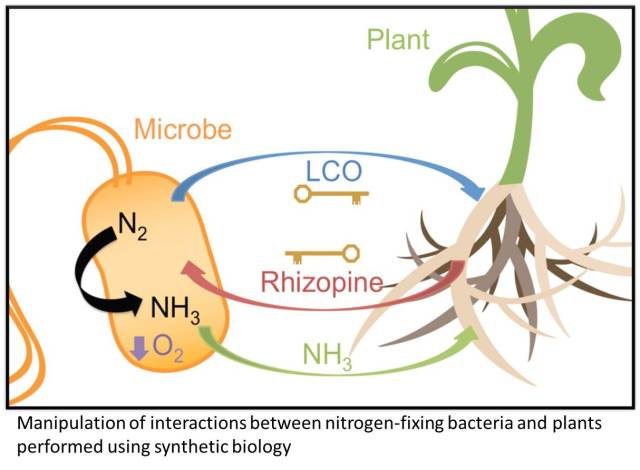Nitrogen (N) is one of the primary limiting nutrients for plant growth. The high demand for N fertilization in agriculture has led to environmental catastrophe in some parts of the world due to intensive application of inorganic N fertilizers, while in others, yields of cereal crops are limited by the economic inaccessibility of such fertilizers. Both of these issues could be circumvented by transferring the ability to acquire biologically fixed N to cereal crops, a trait that is currently mostly limited to the symbiosis between legumes and N-fixing rhizobia.
Recent advances in synthetic biology have potentiated the cross-species transfer of the genes for N fixation while enforcing synthetic control of their regulation by “refactoring” nif genes (1). The Synthetic Symbiosis project (SynSym) aims to transfer N fixation to bacteria with the pre-existing ability to associate with cereal crops. A synthetic N-fixing symbiosis will by supported by using “lock-and-key” interactions to engineer tailored associations between N-fixing bacteria and cereal crops using established exophytic and endophytic interactions. Key components of these interactions include signal exchange between bacteria and the plant, optimizing carbon supply to bacteria to fuel N fixation, supporting aerobic N fixation through oxygen protection mechanisms and interrupting bacterial N-assimilation to increase N release to the plant.
(1) Temme, K., Zhao, D. & Voigt, C. A. (2012) Refactoring the nitrogen fixation gene cluster from Klebsiella oxytoca. Proceedings of the National Academy of Sciences USA 109:7085-7090.
Please follow the link to the Synthetic Symbioses website

